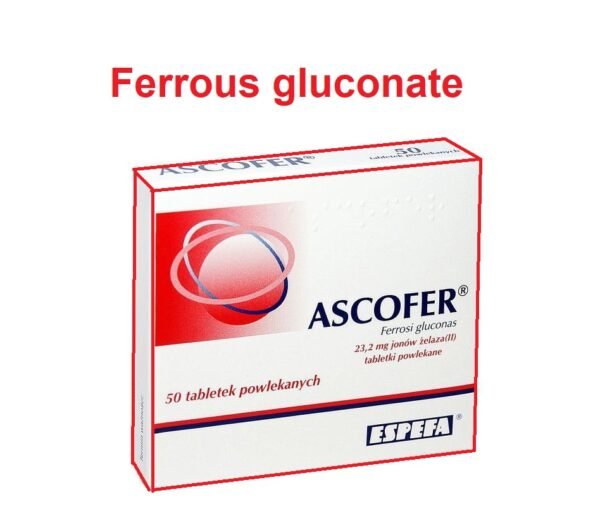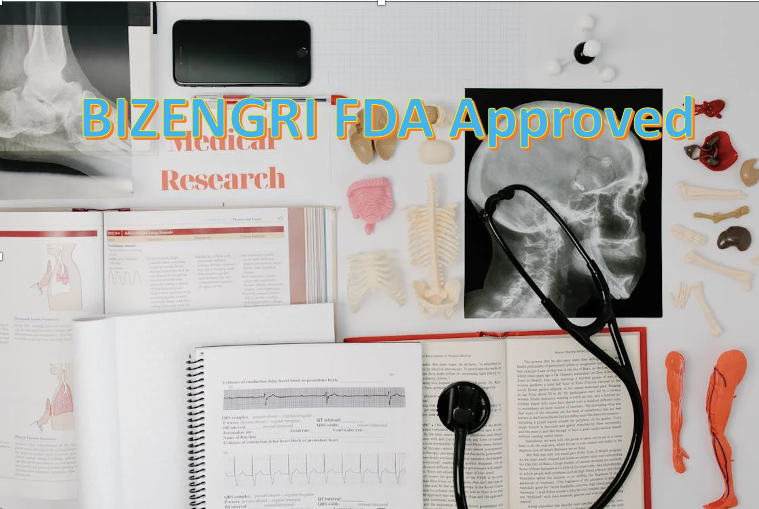Ferrous Gluconate is an orally available formulation of iron that is used in the treatment and prevention of iron deficiency anemia.
Ferrous gluconate Uses:
-
Iron-deficiency anemia:
- It is indicated for the treatment and prevention of iron-deficiency anemias.
Ferrous gluconate dose in Adults
Note:
- The use of enteric-coated and slow or sustained-release formulations should be discouraged because of poor absorption from the gastrointestinal tract.
- Immediate-release formulations should be preferred especially when treating iron deficiency anemia.
- Doses mentioned here are expressed in terms of elemental iron.
- Ferrous Gluconate contains about 12% of elemental iron.
Ferrous gluconate dose in the prevention of iron deficiency anemia in areas where the prevalence of iron deficiency is 40% or more:
- Menstruating women and non-pregnant females of reproductive potential:
- 30 to 60 mg orally daily for three consecutive months in a year.
Ferrous gluconate dose in the treatment of Iron-deficiency anemia:
- 65 to 200 mg/day orally in one to three divided doses.
- Note:
- It has been shown in studies that alternate-day dosing results in greater absorption.
- Individuals who can maintain adherence to alternate day treatment may be advised to take the drug on alternate days.
Ferrous gluconate dose in Childrens
Note:
- It contains 12% of elemental iron.
- Doses mentioned here are expressed as elemental iron.
Ferrous gluconate dose in the prevention of Iron deficiency in areas where the prevalence of anemia is greater than 40%:
-
Infants ≥6 months and Children <2 years:
- 10 to 12.5 mg orally once a day for three consecutive months in a year.
-
Children 2 years to <5 years:
- 30 mg orally daily for three consecutive months in a year.
-
Children ≥5 to 12 years:
- 30 to 60 mg orally daily for three consecutive months in a year.
-
Adolescent menstruating females and non-pregnant females of reproductive potential:
- 30 to 60 mg orally daily for three consecutive months in a year.
Ferrous Gluconate Dose in the treatment of Iron deficiency anemia:
-
Children and Adolescents:
- 3 to 6 mg/kg/day orally in three divided doses;
- The maximum daily dose is 200 mg/day.
Iron Pregnancy Risk Category: B
- Pregnancy has an increase in iron requirements.
- Except for severe iron deficiency, the iron content of the foetus is not affected by maternal iron deficiency.
- Iron deficiency anemia can lead to adverse outcomes for fetuses, such as low birth weight, preterm birth and higher perinatal mortality.
- The treatment is the same for pregnant and not-pregnant women.
- Iron deficiency anemia treatment improves hematologic parameters. However, it is not clear if treatment has any effect on maternal or neonatal outcomes.
- Oral iron replacement is generally sufficient, however, females who are intolerant to oral iron therapy, those with malabsorption or other gastrointestinal disorder limiting oral intake, and those with severe iron deficiency anemia may be advised parenteral iron therapy such as iron sucrose (Venofer).
- As an oral treatment for iron deficiency, ferrous gluconate was tested in pregnant women.
- Poor absorption may make slow-release or enteric-coated formulations less effective. Prefer oral immediate-release formulations to those with a longer shelf life.
Use during breastfeeding:
- Breast milk contains iron. Breastfeeding can increase maternal iron needs.
- Breastmilk is maintained with iron in mild to moderate iron deficiency, but it drops in severe iron deficiency.
- WHO states that iron salts are compatible with breastfeeding.
- The WHO recommends iron supplementation for six to twelve weeks, with or without Folic Acid, for all women who are postpartum or at risk of developing gestational anemia.
- This applies regardless of whether they are breastfeeding.
Dose in Kidney disease:
No specific dosage adjustment required in patients with liver disease.
Dose in liver disease:
No specific dosage adjustment required in patients with liver disease.
Common Side Effects of Ferrous gluconate:
-
Gastrointestinal:
- Constipation
- Darkening of stools
- Nausea
- Stomach cramps
- Vomiting
Less Common Side Effects of Ferrous gluconate:
-
Gastrointestinal:
- Dental discoloration
- Diarrhea
- Heartburn
-
Genitourinary:
- Urine discoloration
Contraindications to Ferrous gluconate:
- Allergy reactions to iron salts and any component of the formulation
- hemochromatosis
- Hemolytic anemia
Warnings and precautions
-
Gastrointestinal Disease:
- Patients with ulcerative colitis, peptic ulcer disease, or enteritis should avoid oral iron.
Ferrous gluconate: Drug Interaction
Note: Drug Interaction Categories:
- Risk Factor C: Monitor When Using Combination
- Risk Factor D: Consider Treatment Modification
- Risk Factor X: Avoid Concomitant Use
Risk Factor C (Monitor therapy) |
|
| Proton Pump Inhibitors | May decrease the absorption of Iron Salts. |
| Histamine H2 Receptor Antagonists | May decrease the absorption of Iron Salts. |
Risk Factor D (Consider therapy modification) |
|
| Alpha-Lipoic Acid | Iron Salts may decrease the absorption of Alpha-Lipoic Acid. Alpha-Lipoic Acid may decrease the absorption of Iron Salts. |
| Antacids | May decrease the absorption of Iron Salts. |
| Bictegravir | Iron Salts may decrease the serum concentration of Bictegravir. Management: Bictegravir, emtricitabine, and tenofovir alafenamide can be administered with iron salts under fed conditions, but coadministration with or 2 hours after an iron salt is not recommended under fasting conditions. |
| Bisphosphonate Derivatives | Polyvalent Cation Containing Products may decrease the serum concentration of Bisphosphonate Derivatives. Management: Avoid administration of oral medications containing polyvalent cations within: 2 hours before or after tiludronate/clodronate/etidronate; 60 minutes after oral ibandronate; or 30 minutes after alendronate/risedronate. Exceptions: Pamidronate; Zoledronic Acid. |
| Cefdinir | Iron Salts may decrease the serum concentration of Cefdinir. Red-appearing, nonbloody stools may also develop due to the formation of an insoluble iron-cefdinir complex. Management: Avoid concurrent cefdinir and oral iron when possible. Separating doses by several hours may minimize interaction. Iron-containing infant formulas do not appear to interact with cefdinir. |
| Deferiprone | Polyvalent Cation Containing Products may decrease the serum concentration of Deferiprone. Management: Separate administration of deferiprone and oral medications or supplements that contain polyvalent cations by at least 4 hours. |
| Dolutegravir | Iron Salts may decrease the serum concentration of Dolutegravir. Management: Administer dolutegravir at least 2 hours before or 6 hours after oral iron. Administer dolutegravir/rilpivirine at least 4 hours before or 6 hours after oral iron salts. Alternatively, dolutegravir and oral iron can be taken together with food. |
| Eltrombopag | Polyvalent Cation Containing Products may decrease the serum concentration of Eltrombopag. Management: Administer eltrombopag at least 2 hours before or 4 hours after oral administration of any polyvalent cation containing product. |
| Entacapone | Iron Salts may decrease the serum concentration of Entacapone. Management: Consider separating doses of the agents by 2 or more hours to minimize the effects of this interaction. Monitor for decreased therapeutic effects of levodopa during concomitant therapy, particularly if doses cannot be separated. |
| Ferric Hydroxide Polymaltose Complex | May decrease the serum concentration of Iron Salts. Specifically, the absorption of oral iron salts may be reduced. Management: Do not administer intravenous (IV) ferric hydroxide polymaltose complex with other oral iron salts. Therapy with oral iron salts should begin 1 week after the last dose of IV ferric hydroxide polymaltose complex. |
| Iron Isomaltoside | May decrease the serum concentration of Iron Salts. Specifically, absorption of oral iron salts may be reduced. Management: Do not administer intravenous (IV) iron isomaltoside with other oral iron salts. Therapy with oral iron salts should begin 5 days after the last dose of IV iron isomaltoside. |
| Levodopa | Iron Salts may decrease the serum concentration of Levodopa. Only applies to oral iron preparations. Management: Consider separating doses of the agents by 2 or more hours to minimize the effects of this interaction. Monitor for decreased therapeutic effects of levodopa during concomitant therapy, particularly if doses cannot be separated. |
| Levothyroxine | Iron Salts may decrease the serum concentration of Levothyroxine. Management: Separate oral administration of iron salts and levothyroxine by at least 4 hours. Separation of doses is not required with parenterally administered iron salts or levothyroxine. |
| Methyldopa | Iron Salts may decrease the serum concentration of Methyldopa. |
| PenicillAMINE | Polyvalent Cation Containing Products may decrease the serum concentration of PenicillAMINE. Management: Separate the administration of penicillamine and oral polyvalent cation containing products by at least 1 hour. |
| Phosphate Supplements | Iron Salts may decrease the absorption of Phosphate Supplements. Management: Administer oral phosphate supplements as far apart from the administration of an oral iron salt as possible to minimize the significance of this interaction. Exceptions: Sodium Glycerophosphate Pentahydrate. |
| Quinolones | Iron Salts may decrease the serum concentration of Quinolones. Management: Give oral quinolones at least several hours before (4 h for moxi- and sparfloxacin, 2 h for others) orafter (8 h for moxi-, 6 h for cipro/dela-, 4 h for lome-, 3 h for gemi-, and 2 h for levo-, nor-, oflox-, pefloxacin, or nalidixic acid) oral iron salts Exceptions: LevoFLOXacin (Oral Inhalation). |
| Tetracyclines | May decrease the absorption of Iron Salts. Iron Salts may decrease the serum concentration of Tetracyclines. Exceptions: Eravacycline. |
| Trientine | Polyvalent Cation Containing Products may decrease the serum concentration of Trientine. Management: Avoid concomitant administration of trientine and oral products that contain polyvalent cations. If oral iron supplements are required, separate the administration by 2 hours. If other oral polyvalent cations are needed, separate administration by 1 hour. |
Risk Factor X (Avoid combination) |
|
| BaloxavirMarboxil | Polyvalent Cation Containing Products may decrease the serum concentration of BaloxavirMarboxil. |
| Dimercaprol | May enhance the nephrotoxic effect of Iron Salts. |
Monitoring parameters:
- Serum iron,
- total iron binding capacity,
- reticulocyte count,
- hemoglobin
How to administer Ferrous gluconate?
Iron supplements should be administered on an empty stomach with water or juice
Mechanism of action of Ferrous gluconate:
It is an essential mineral that contains iron, which is required to synthesize hemoglobin and myoglobin as well as other enzymes.
The beginning of action:
- After oral administration, the hematologic response can be seen within 3-10 days.
- After oral intake, peak reticulocytosis occurs within 5-10 days. A rise in hemoglobin takes place in 2 to 4 weeks.
International Brand Names of Ferrous gluconate:
- Ferate
- Fergon
- Additiva Ferrum
- Ascofer
- Biogam Fe
- Cromatonferro
- Elixir Ferrous Gluconate
- Emoferrina
- Eritropiu
- Ferglucon
- Fergon
- Fernore
- Ferol
- Ferrematos
- Ferrlecit
- Ferro-Agepha
- Ferro-Gradumet
- Ferrogluconaat FNA
- ferrominerase
- Ferronat
- Ferrum Verla
- Fertinic
- Glucofer
- Glucoferro
- Hemototal
- Imperon
- Ironax
- Ironorm
- Losferon
- Losferron
- Oligostim Fe
- Rulofer G
- Sustemial
- Vitaferro Brause
Ferrous gluconate Brand Names in Pakistan:
Ferrous Gluconate Syrup 300 mg/ml |
|
| Feglone | Pharmawise Labs. (Pvt) Ltd. |
Ferrous Gluconate Syrup 300 mg/5ml |
|
| Lawrgluconate | Lawrence Pharma |

 Injection for familial chylomicronemia syndrome.jpeg)


